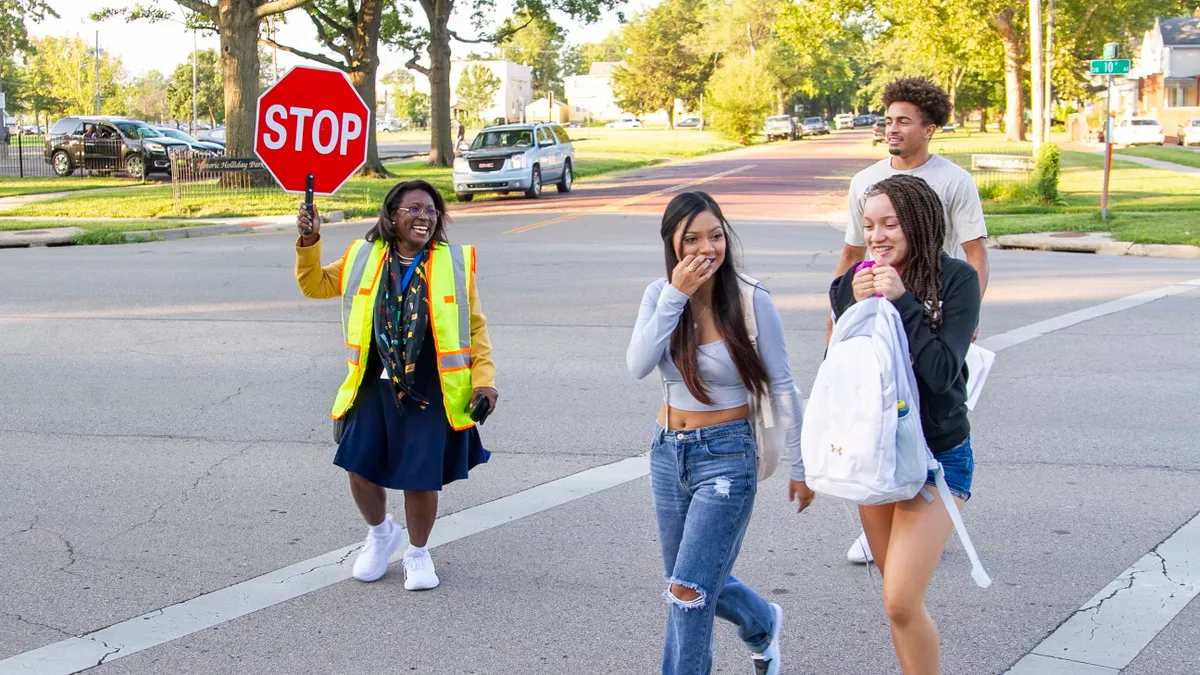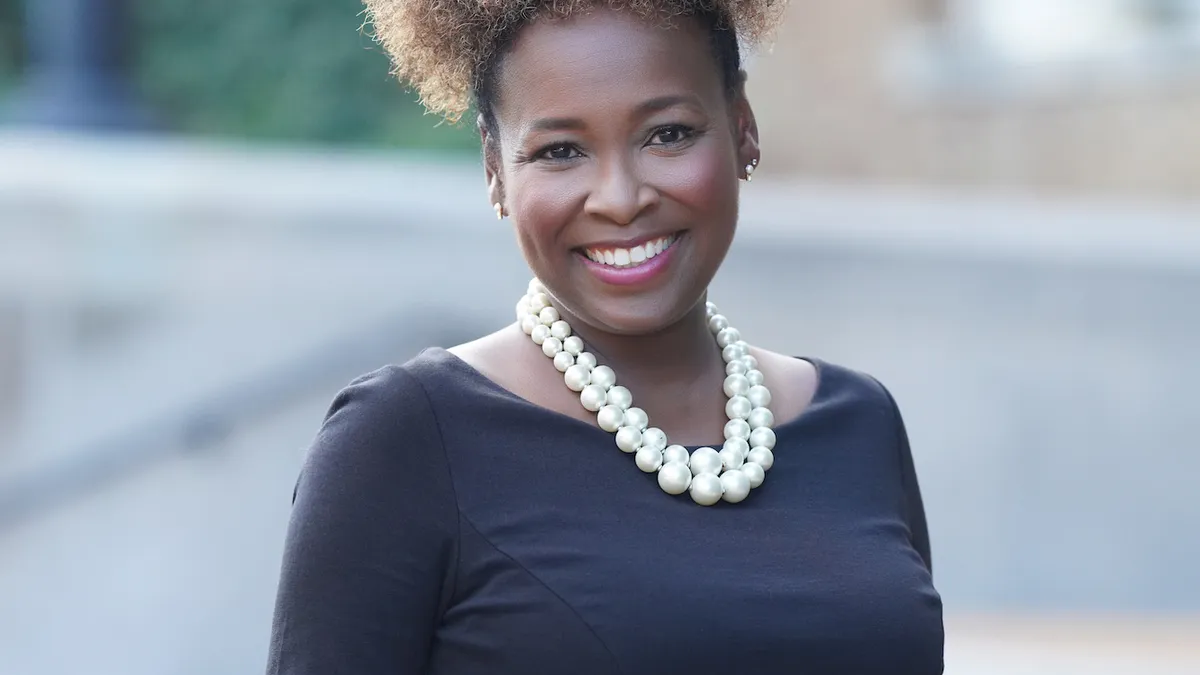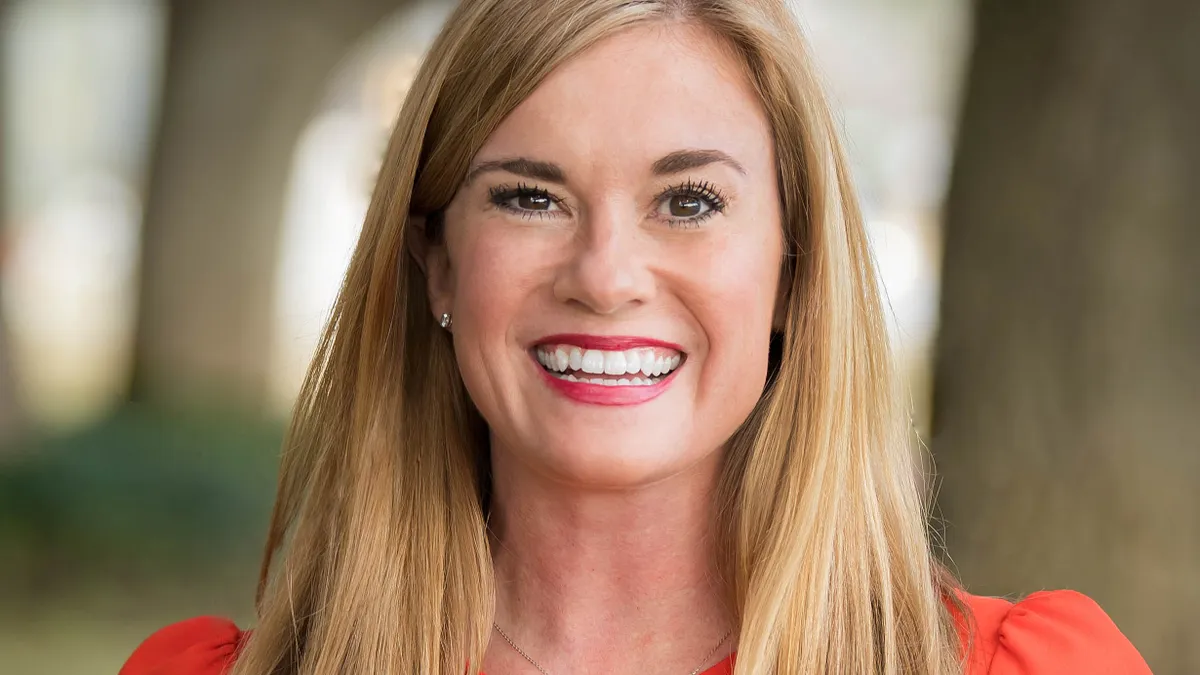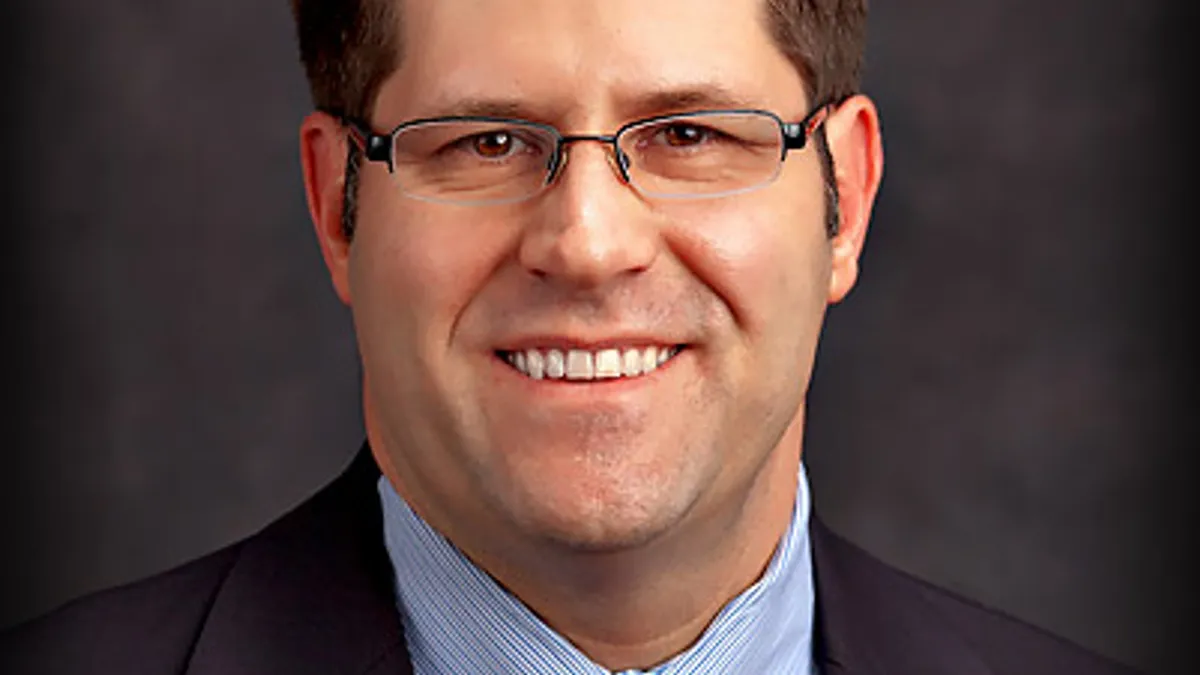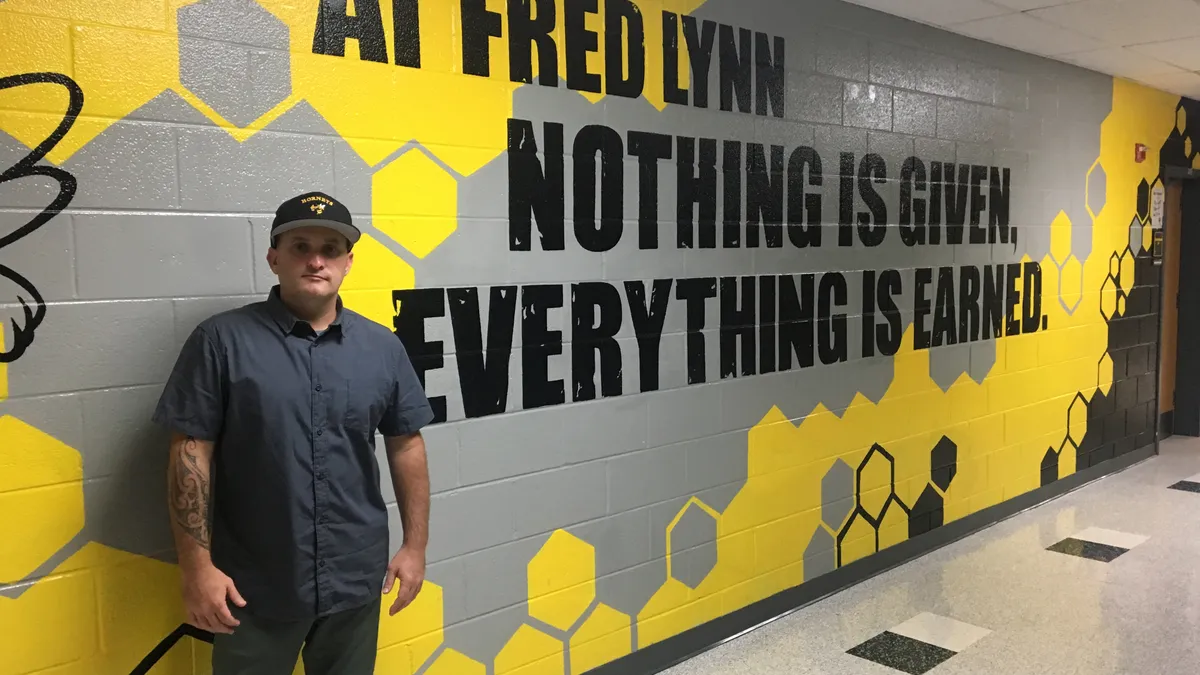Lessons In Leadership is an ongoing series in which K-12 principals and superintendents share their best practices as well as challenges overcome. For more installments, click here.
When Jerry Almendarez took the reins of California’s Santa Ana Unified School District in January 2020, his initial goal was to identify the shared focus and values of the surrounding community.
That information would ultimately be distilled into a graduate profile identifying six characteristics that the district’s 45,000 students — 91% of whom are Latino and 81% eligible for free and reduced-price lunch — should embody by the time they complete high school. Those six characteristics include:
- World-ready scholar.
- Community builder.
- Empathetic communicator.
- Global innovator.
- Collaborative leader.
- Architect of learning.
But the path from ideation to completion of that profile wasn’t so clear-cut.
By the time COVID hit during Almendarez’s first few months in office, he had discovered community stakeholders all held different opinions on which characteristics and skills to prioritize.
With the help of the National Center on Education and the Economy, a nonprofit research and advocacy organization, the district gathered research on the characteristics of high-performing educational institutions around the world. Almendarez then initiated seven months of four-hour, bimonthly Zoom conversations with around 60 community leaders from universities, community colleges, local business, the nonprofit sector and faith-based organizations. Those meetings were held to determine if those traits existed in Santa Ana — and what the school district was doing, or not doing, that limited academic success.
Those sessions, though, were still just the beginning. A hiccup in the initial rollout of the graduate profile in 2021 led the district to shift gears and focus on student voice by creating annual student listening sessions.
We recently caught up with Almendarez to learn what those student listening sessions have meant for teaching, school programming and more.
Editor’s Note: The following interview has been edited for brevity and clarity.
K-12 DIVE: What did you discover during the graduate rollout process, and how did student voice factor into it?
JERRY ALMENDAREZ: As we finalized the original graduate profile, and as we were getting ready to roll it out, we brought it to our principals. We were having conversations about, “OK, what does this mean to you? What does it look like? How are you guys going to roll it out at your various campuses?”
At one point, in one of our meetings, one of the principals says, “Hey, these meetings are great, and we're having the ability to calibrate how we see these characteristics and this profile being rolled out in our communities. But you're asking us to create a system for kids, and look around the room — there are no kids.”
That hit me like a ton of bricks. I was so embarrassed, because I thought, “Oh my God, did we just waste seven months of community leaders’ time and effort?” And I just really lost sleep over that.
I had a conversation with the executive team, and they said, “You know what? It's better to stop, to pause, and to actually do student input sessions, and then circle back to calibrate if we were in the right, and did we identify the right things or not?”
Reluctantly, we paused the rollout of the graduate profile. We asked our research department to create a formula that would allow us to randomly select schools and randomly select students within those schools who reflected their communities. We didn't want to hear from the students we always hear from.
What were some of the most memorable takeaways from those student sessions in 2021?
ALMENDAREZ: I remember going to one site and the principal coming up to me and saying, “Hey, do you really want…,” and he identified these kids on the list. He wasn't trying to be malicious or anything. He was, I think, trying to protect the integrity of the process. But I told him, “These kids are randomly selected. These are kids who we need to hear from.”
These kids were some of the most vocal kids and most empowered at this session. One of the young men — a high school sophomore — was telling me, “I don't even bother going to my algebra class, because between the time I enter the room and the time I sit down, the teachers give me a hard time. So why even go?”
It was very genuine and very sincere. We learned so much through this. We went through about 12 schools our first year, and interviewed over 600 students in kindergarten through high school.
I remember a kindergartner raising his hand and saying, “I don't learn while I’m sitting down for six hours.” How brave was that kindergartner to open his mouth, and to say that not just in a room full of kids he doesn't know, but a room full of adult strangers?
Then a middle school girl told us, “I just wish the teacher would pronounce my name right.”
Man, it just hit so hard. What we discovered from that first round is the kids overwhelmingly said they wish that the adults in the room would pay more attention to getting to know the kids: Know why we can't do our homework. Know why I come to school not prepared. Know why I fall asleep my first three periods — because I have to take care of my siblings.
It really just opened our eyes in the sense that there are stories out there that we need to know to be able to better serve our students. So we pivoted in our graduate profile rollout from an academic focus the first year to an interpersonal, human relation focus.
That really highlights the power of just feeling seen and heard — not just for students who have academic or disciplinary issues, but also for those from economically disadvantaged or marginalized communities.
ALMENDAREZ: Exactly. It was appreciated that somebody's listening, and they got us so excited. We were almost in tears, but we thought, “We need to talk to the teachers, because the teachers need to hear this.”
The students were very empowered. These sessions are in person — and they have to be in person, because you don't get the same response on a survey. You get the answers to the questions you ask, but you don't see the emotions. You don't hear the frustrations. You don't see the body language when a student says, “I have too much homework,” and the expressions on their face with the reaction.
It causes other students to say, “Yeah, you know what? You're right.” A student will say, “I wish the teacher would be a little bit more considerate with homework,” and then seven other students will raise their hands and say, “I want to add to that.”
In the three years you’ve held these sessions, have you noticed any changes in the feedback you get from students? What about changes that have come about as a result?
ALMENDAREZ: This year, we're discovering the issues that are rising to the top are the homework issues, like, “You guys don't understand how much homework you're giving us. We have lives outside of the classroom. We have athletic events. I'm staying up till 11 o'clock. Sometimes I don't even wanna do my homework. Sometimes I want to give up.”
So my challenge to my staff was, let's have a conversation about reimagining homework.
Other things like food have been an issue — students want the [cafeteria] food to taste better. We have a scratch kitchen as a result of that input. Our nutritional service director went out and purchased a food truck, so we have our own district food truck where our culinary students are going to be a part of a process and where we go out and have kids do taste-testing events to see what foods they like and what foods they don't like.
How has the student feedback helped improve relationships, communication and processes between school and district staff — the adults in this equation — and how has that ultimately benefited students?
ALMENDAREZ: For me and for my executive cabinet, we have to model what the expectations are. If the teachers are feeling like the principals don't care, then I wonder how the principals feel, right?
What we're doing at the executive cabinet level is modeling those expectations. We're checking in with our principals. We are collecting the student and the teacher listening data. Our research department is presenting it to our principals — not just our site administrators, but our assistant principals as well, to include them in the loop.
We're also having conversations across departments. So, is HR providing the support to principals when they need positions filled so there's not an eight-month gap where people within that school site are having to pick up duties not knowing what's happening?
We're also meeting with our union presidents. We sit down and we say, “OK, here's what we're hearing. Can you guys confirm or deny?”
A lot of times, they'll bring issues to us that weren't on our radar, or they'll say, “Yeah, here's what we're hearing. But you know what, it's not everybody. It's just this one site.”
That allows us to go to that school site and say to the principal, “OK, here are the issues. What can we do to support you?” And if that principal doesn't change or work on improving their communication relationships, then we have to deal with it in a different way.
We have constant meeting cycles and sessions with different stakeholders in the district to really keep our pulse on, “Are we doing the right thing for the right reasons, or do we have blind spots?”

















